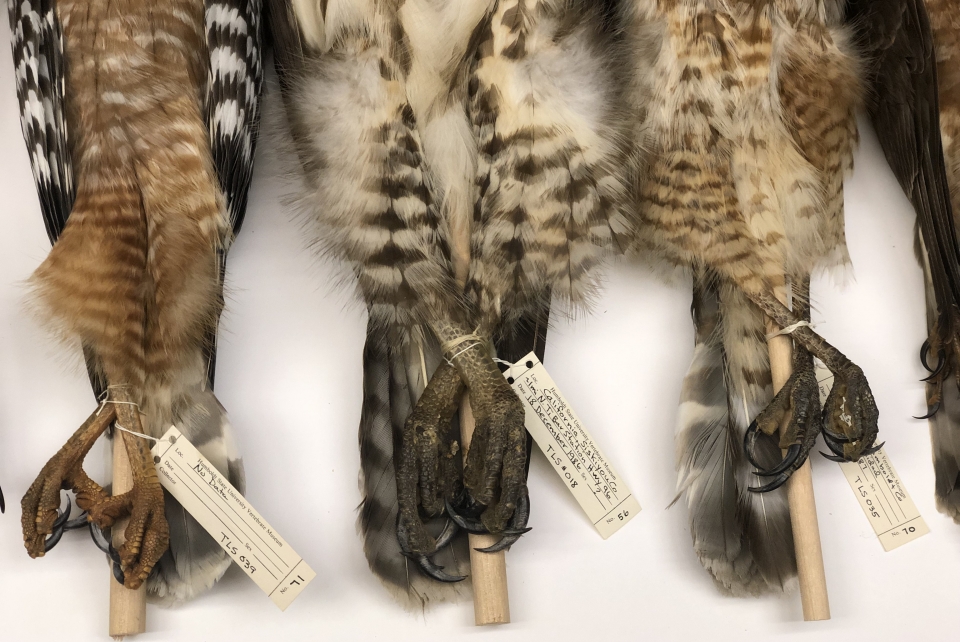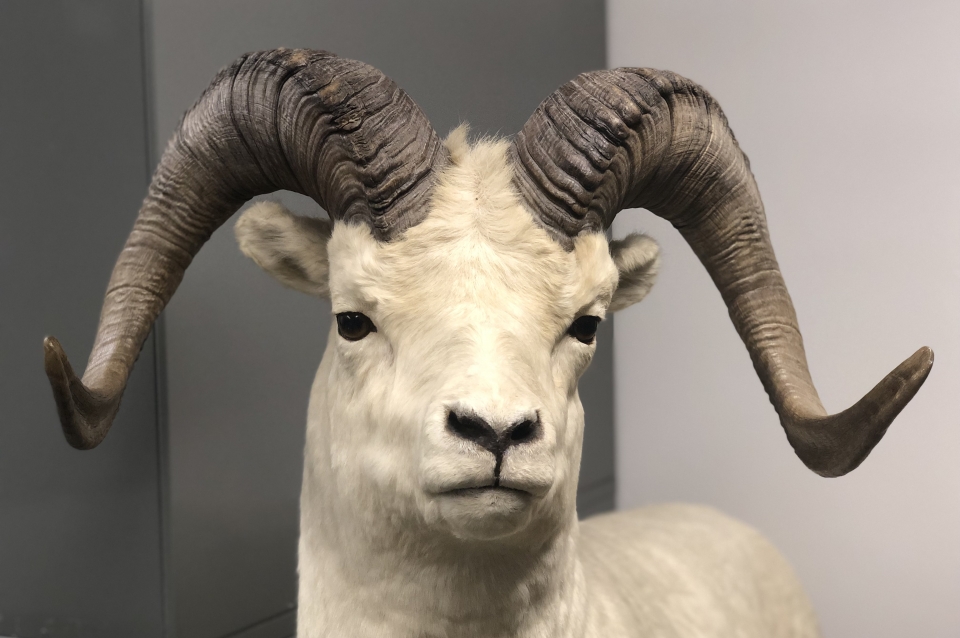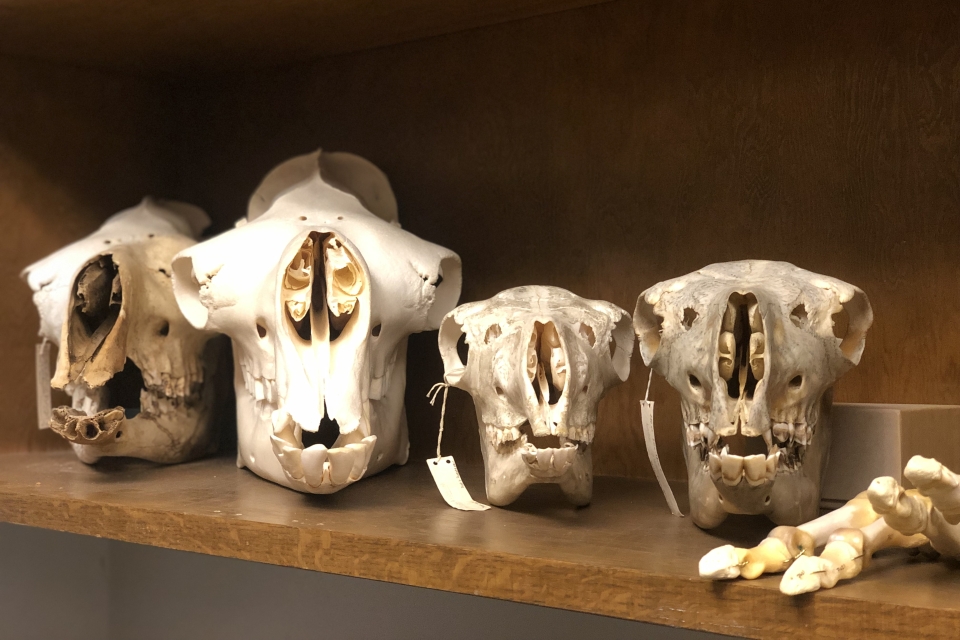
Mammal Collection
The Vertebrate Museum’s mammal collection contains approximately 8,750 specimens, including skins and skeletal material from a variety of terrestrial, aquatic, marine and volant mammals. The research collection is currently the second largest of its kind in the California State University System at just over 9,000 specimens. The collection dates back to 1923 and is particularly strong in marine mammals of the Pacific Ocean and terrestrial mammals from northern California and the Great Basin. It is fully accredited by the American Society of Mammalogists. We also have an outstanding teaching collection of over 800 specimens, with exceptional coverage of the Orders and Families of living mammals.
We are currently in the process of migrating our catalog to Arctos. In the meantime, our catalog up to 2016 is available to search on VertNet.
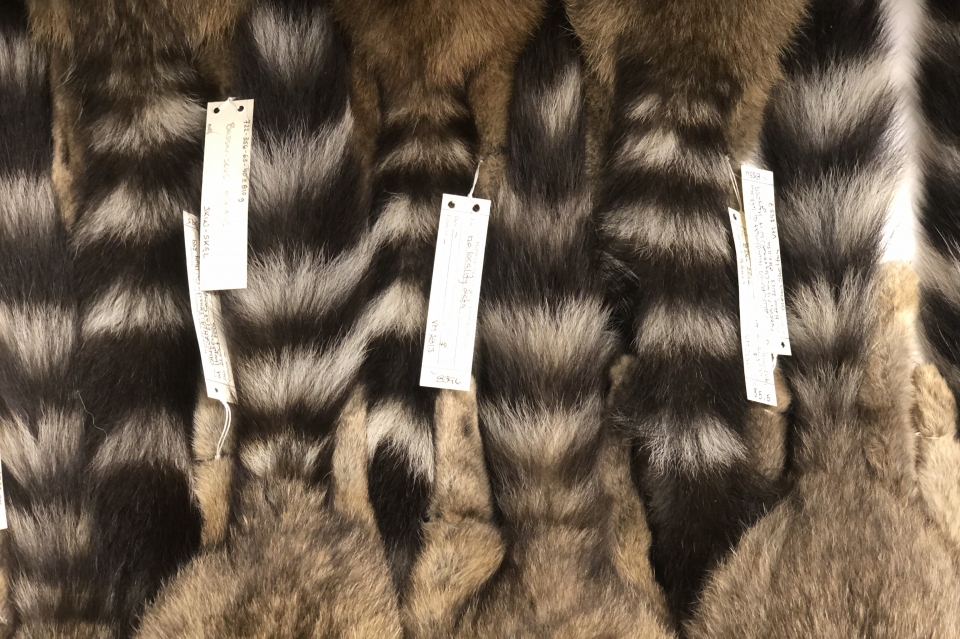
Frozen Tissue Collection
In the fall of 2001 the Humboldt Vertebrate Museum began a frozen tissue collection for mammals. All new mammals accessioned into the museum are being accompanied by tissue samples (i.e., heart, liver or kidney). Each tissue specimen is linked via a computer data base to the actual museum specimen from which it was taken. Frozen tissue collections such as ours serve as a valuable resource for genetic studies which are becoming increasingly important in the fields of conservation biology, systematics, biogeography and forensic sciences.
Our tissue catalog will be searchable on Arctos in the near future. For now, please email museum@humboldt.edu for tissue queries.
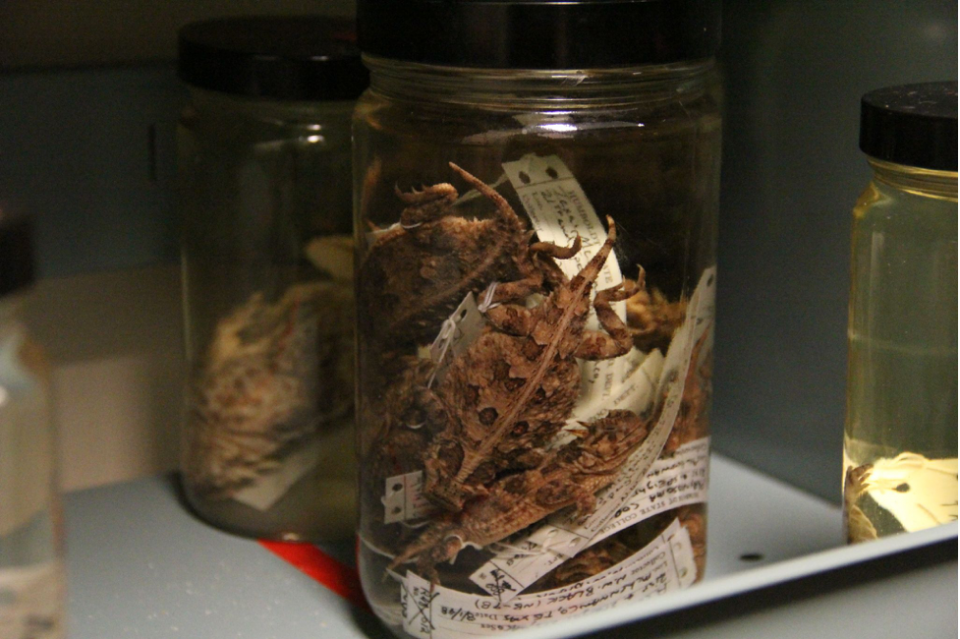
Herpetology Collection
The Humboldt Vertebrate Museum contains a diverse collection of reptiles and amphibians used in research and teaching. The Amphibian and Reptile Research Collections number approximately 750 jars each (with up to a dozen specimens per jar), with an additional 360 jars in the teaching collection. In total, our Herpetology Collection includes over 1,800 jars and 6,000-7,000 individual specimens. This collection dates back to 1929 and is especially strong in specimens from the amphibian-rich Pacific Northwest.
Our herp catalog is available on VertNet.
